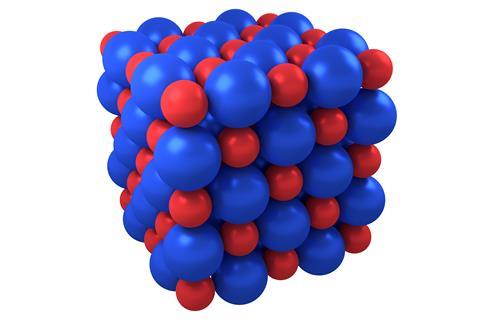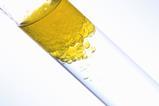Highlight the importance of electrostatic forces of attraction and overcome ionic bonding misconceptions
Chemical bonding is a concept 16–18 pupils often find difficult to grasp. The attractive nature of electrostatic forces in matter is sometimes not highlighted early enough in pupils’ scientific education. A lack of understanding manifests itself with older pupils struggling to do calculations involving simple stoichiometry in ionic compounds and separating redox from ionic bond formation. As teachers, we can do something about this by distinguishing ion formation and ionic bond formation more clearly.
I started to look at the way we teach states of matter to our 11–14 students. We taught solids, liquids and gases by demonstrating the gaps between the particles and how greater amounts of energy increase the gaps with changes in state. But we didn’t explain why these different gaps exist. I altered the course to emphasise the particles and attraction, something which I felt had been overlooked.
Opposites attract
Now I illustrate electrostatic forces and the concept of attraction before teaching ionic bonding. Using a rubbed poly(ethene) rod and small scraps of paper pupils can see the effect of opposite charges attracting, and that same charges repel with our gold-leaf electroscope.

While we use Molymods to build covalent molecules, there are no kits for ionic bonding. You can use blocks of plasticine, though. For a number of years, we have used different coloured plasticine to make ions, which can then be stuck together to build an ionic lattice. This interactive activity matches the fun students usually have with the Molymod kits and covalent bonding, and helps them to visualise the lattice structure.
This activity demonstrates that an ionic bond is formed from the electrostatic forces which hold two oppositely charged ions together, rather than the often-stated metal atom donating an electron to the non-metal. This misconception underplays the attractive nature and the fact that metal atoms certainly don’t donate or eject electrons without cause; they are removed from them. The plasticine model shows that ions are usually formed before they come into contact, eg neutralisation of aqueous hydrochloric acid by solid sodium oxide – all ionic reactants. This hammers home the point that ion formation is different from ionic bond formation and can help overcome misconceptions.
This activity demonstrates that an ionic bond is formed from the electrostatic forces which hold two oppositely charged ions together, rather than the often-stated metal atom donating an electron to the non-metal. This misconception underplays the attractive nature and the fact that metal atoms certainly don’t donate or eject electrons without cause; they are removed from them. The plasticine model shows that ions are usually formed before they come into contact, eg neutralisation of aqueous hydrochloric acid by solid sodium oxide – all ionic reactants. Use this resource on chemical misconceptions (rsc.li/3wOPp2b) to hammer home the point that ion formation is different from ionic bond formation.
Play-Doh is a firm favourite with pupils for building these ionic lattices as it’s recognisable and they have fond memories of it from their younger years. However, Play-Doh ions do not stick together particularly well. The Play-Doh lattices also go brittle more quickly than other types of plasticine/modelling clay, which remain pliable, resulting in a lattice which you could argue has weaker electrostatic forces of attraction between the ions. Some years ago, one of my colleagues made an excellent addition to this activity when she got her pupils to stick one layer of the plasticine ionic lattice on A3 paper to make a poster, and then, in a sequence, showed how the ions dissociate and form solvated ions. The Play-Doh ionic lattices harden up quickly and are hard to separate for this demonstration so I’d recommend using plasticine or modelling clay.
The name’s bond, ionic bond
The concept of ionic bonding and ions coming together can be practically exemplified in two ways that I’ve found pupils really enjoy. Crystallisation of copper sulfate from saturated solutions is a big hit – the effect of increasing temperature on the solubility of the ionic compound can be demonstrated and the resulting crystals formed overnight are eagerly anticipated by the pupils.
I also use microscale practicals to show ionic bond formation. In these experiments, we compare lead compounds formed by precipitation reactions with various anions and observe the reactions between sodium hydroxide ions and different cations. Again, these practicals emphasise the formation of an ionic bond due to the electrostatic attraction of ions. I have found that pupils really appreciate this hands-on approach to ions and engage with the bond formation practicals. The chemistry of plasticine is a great talking point and link to the next lesson on the properties of structures, too.
I also use microscale practicals to show ionic bond formation. In these experiments, we compare lead compounds formed by precipitation reactions with various anions (rsc.li/36ihYu0) and observe the reactions between sodium hydroxide ions and different cations (rsc.li/3565ViA). Again, these practicals emphasise the formation of an ionic bond due to the electrostatic attraction of ions. I have found that pupils really appreciate this hands-on approach to ions and engage with the bond formation practicals. The chemistry of plasticine is a great talking point and link to the next lesson on the properties of structures, too.
Duncan Short














3 readers' comments